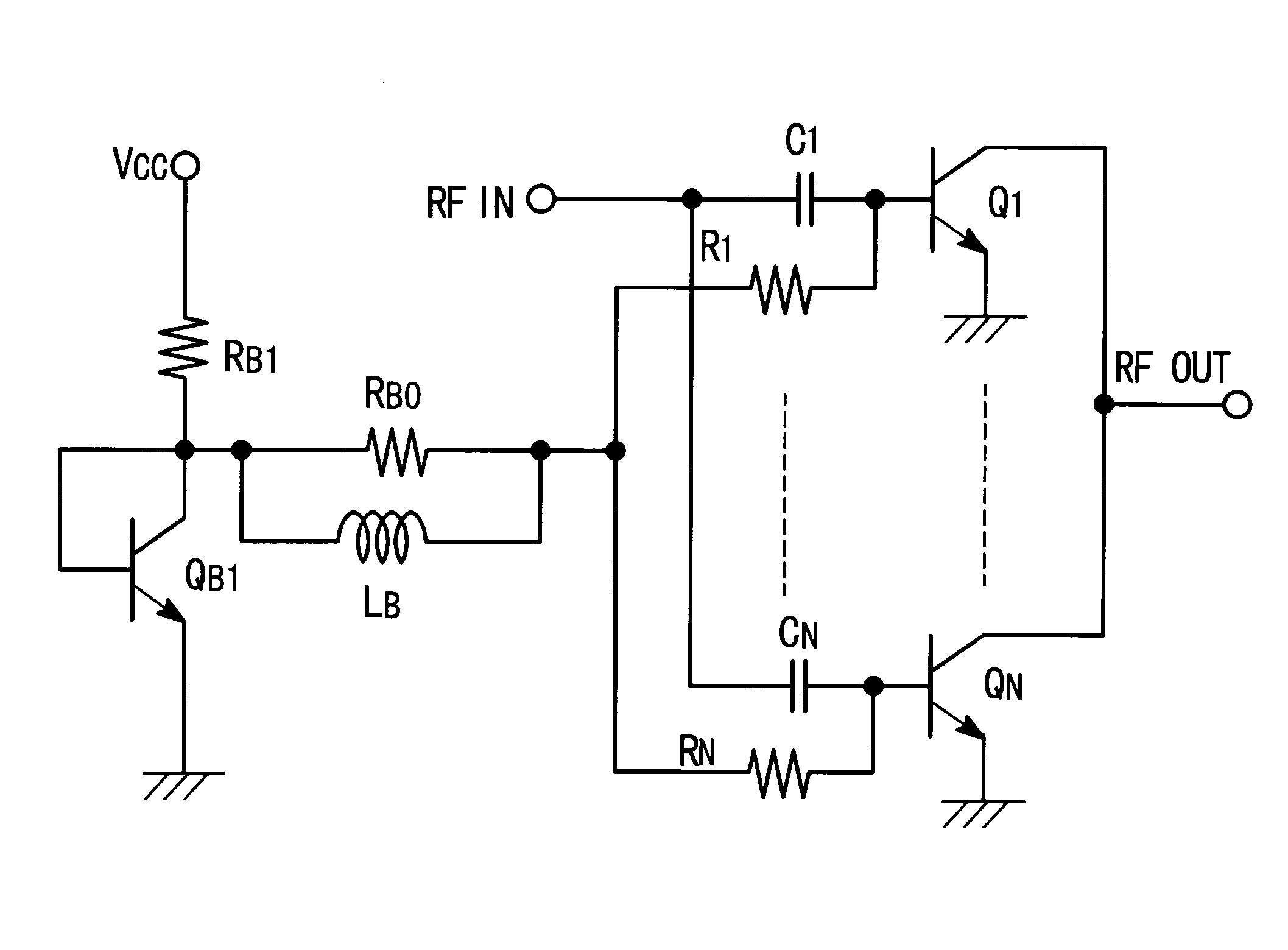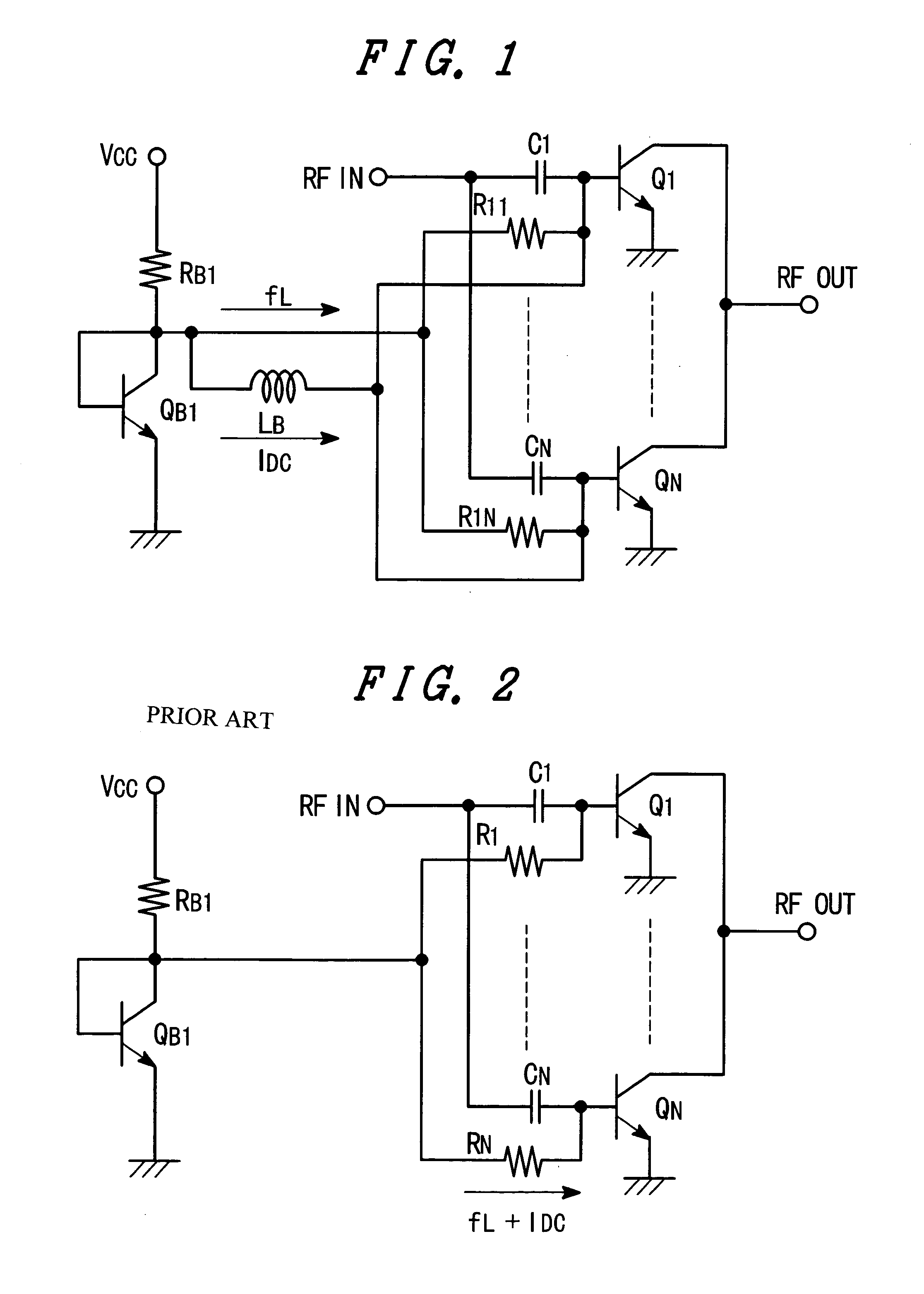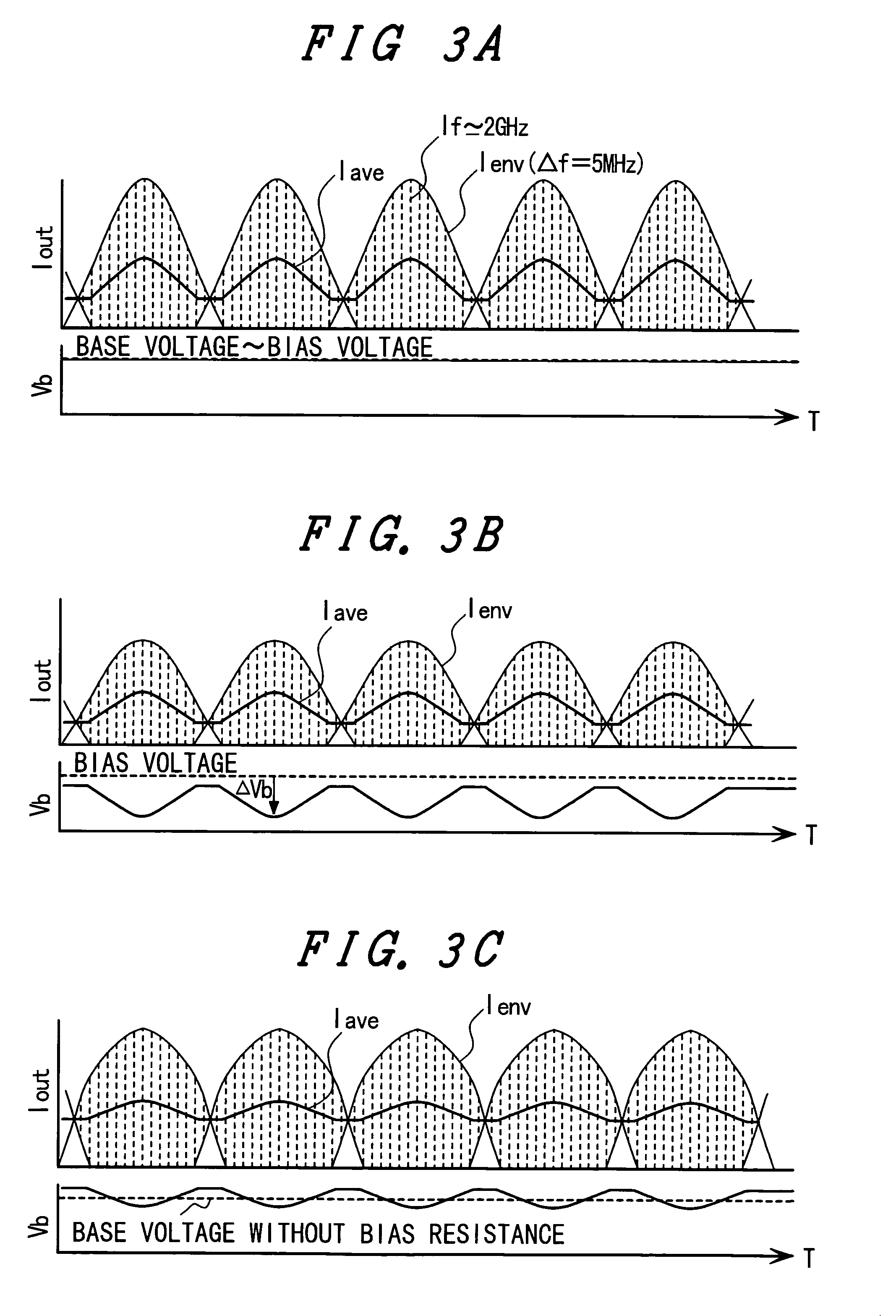Radio frequency power amplifier and communication system
a technology of radio frequency and power amplifier, which is applied in the direction of amplifiers, amplifiers with semiconductor devices only, amplifiers with semiconductor devices, etc., can solve the problems of increasing signal distortion, and achieve the effects of suppressing envelope waveform distortion, reducing gain, and high efficiency
- Summary
- Abstract
- Description
- Claims
- Application Information
AI Technical Summary
Benefits of technology
Problems solved by technology
Method used
Image
Examples
embodiment 1
[0056]FIG. 1 is a circuit diagram showing a major part of a radio frequency power amplifier compliant with WCDMA (Wide-band Code Division Multiple Access) indicative of the first embodiment of the present invention. The diagram includes an amplifying transistor and a bias circuit connected to its base.
[0057]The embodiment exemplifies a combination of the fist means and the first configuration of the second means. This example shows arrangement of a coil parallel to a bias resistor having a value three to five times greater than that of a conventional ballast resistor.
[0058]In FIG. 1, the reference symbols Q1 to QN denote N equivalent SiGe HBTs; C1 to CN denote N equivalent capacitors; R11 to R1N denote N equivalent resistors; QB1 denotes an SiGe HBT; RB1 denotes a resistor; LB denotes a coil; VCC denotes a constant voltage supply; RFin denotes a high-frequency input terminal; and RFout denotes a high-frequency output terminal. The term “equivalent” here signifies an attribute of hav...
embodiment 2
[0064]FIG. 4 is a circuit diagram showing a major part of a WCDMA compliant radio frequency power amplifier according to the second embodiment of the present invention. The diagram includes an amplifying transistor and a bias circuit connected to its base. FIG. 4 uses the same reference symbols as those for the conventional example and the first embodiment shown in FIG. 2 and a detailed description is omitted for convenience of description.
[0065]According to the embodiment, wiring from each base of the transistors Q1 through QN branches into two paths. Like the conventional example in FIG. 2, one of the paths unites with the corresponding wiring of the other transistors via one of capacitors C1 through CN and is connected to the high-frequency input terminal. The other path unites with the corresponding wiring of the other transistors via one of ballast resistors R1 through RN. Unlike the first embodiment, this path is further connected to the collector of the transistor QB1 via the...
embodiment 3
[0068]FIG. 5 is a circuit diagram showing a major part of a WCDMA compliant radio frequency power amplifier according to the third embodiment of the present invention. The diagram includes an amplifying transistor and a bias circuit connected to its base.
[0069]The third to eighth embodiments are combinations of the first means and the second configuration of the second means and provide specific configuration examples for realizing the following function. That is to say, there is provided a bias resistor having a value three to five times greater than that of a conventional ballast resistor. The function detects the amount of decrease in the amplifying transistor's base average voltage due to a voltage drop in the bias resistor. The function automatically increases an output voltage from the base bias circuit so as to compensate this voltage drop. These embodiments have the basic common configuration that comprises circuit components including at least one bipolar transistor configu...
PUM
 Login to View More
Login to View More Abstract
Description
Claims
Application Information
 Login to View More
Login to View More - R&D
- Intellectual Property
- Life Sciences
- Materials
- Tech Scout
- Unparalleled Data Quality
- Higher Quality Content
- 60% Fewer Hallucinations
Browse by: Latest US Patents, China's latest patents, Technical Efficacy Thesaurus, Application Domain, Technology Topic, Popular Technical Reports.
© 2025 PatSnap. All rights reserved.Legal|Privacy policy|Modern Slavery Act Transparency Statement|Sitemap|About US| Contact US: help@patsnap.com



